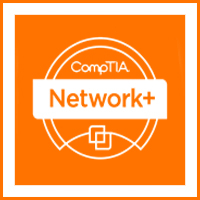| Introduction |
- Overview of networking
- Overview of workgroup
- Overview of domain
- Overview of client
- Overview of server
|
| Protocols and ports |
- Overview of Protocols and ports
- Overview of Protocol types
- Overview of SSH
- Overview of DNS
- Overview of SMTP
- Overview of FTP
- Overview of TFTP
- Overview of TELNET
- Overview of SSH
- Overview of DHCP
- Overview of HTTP
- Overview of HTTPS
- Overview of SNMP
- Overview of RDP
- Overview of NTP
- Overview of SIP
- Overview of SMB
- Overview of POP3
- Overview of IMAP4
- Overview of ICMP
- Overview of UDP
- Overview of TCP
- Overview of IP
- Overview of HTTPS
- Overview of HTTP
- Overview of Connection-oriented vs. connectionless
- Overview of port number classification
|
| Devices, Applications, Protocols, and Services at Each OSI Layers |
- Overview of OSI model
- Overview of Layer 7
- Overview of Layer 6
- Overview of Layer 5
- Overview of Layer 4
- Overview of Layer 3
- Overview of Layer 2
- Overview of Layer 1
|
| Devices, Applications, Protocols, and Services at Each TCP/IP Layers |
- Overview of TCP/IP model
- Overview of Layer 1
- Overview of Layer 2
- Overview of Layer 3
- Overview of Layer 4 / 5
|
| Concepts and Characteristics of Routing and Switching |
- Overview of network traffic
- Overview of Broadcast domains
- Overview of CSMA/CD
- Overview of CSMA/CA
- Overview of Collision domains
- Overview of Protocol data units
- Overview of MTU
- Overview of Broadcast
- Overview of Multicast
- Overview of Unicast
- Overview of Segmentation and interface properties
- Overview of ARP table
- Overview of Routing
- Overview of Routing protocols
- Overview of Distance-vector routing protocols
- Overview of Link-state routing protocols
- Overview of Routing types
- Overview of Static
- Overview of Dynamic
- Overview of QoS
- Overview of NAT/PAT
|
| Internet Protocol Addressing |
- Overview of NIC
- Overview of MAC address
- Overview of Private vs. public
- Overview of Loopback and Apipa
- Overview of Default gateway
- Overview of Subnet mask
- Overview of Subnetting
- Overview of Supernetting
- Overview of Classes A, B, C, D, and E
- Overview of CIDR
- Overview of Address assignments
- Overview of DHCP
- Overview of APIPA
- Overview of Loopback
|
| Compare and Contrast the Characteristics of Network Topologies, Types and Technologies |
- Overview of Wired topologies
- Overview of Logical vs. physical
- Overview of Star
- Overview of Mesh
- Overview of Bus
- Overview of Tree
- Overview of Hybrid
- Overview of Ring
- Overview of Wireless topologies
- Overview of Ad hoc
- Overview of Infrastructure
- Overview of LAN
- Overview of WLAN
- Overview of MAN
- Overview of WAN
- Overview of CAN
- Overview of SAN
- Overview of PAN
- Overview of 802.11
|
| Wireless Technologies and Configurations |
- Overview of 802.11 standards:
- Overview of Frequencies:
- Overview of Speed and distance requirements
- Overview of Channel bandwidth
- Overview of Unidirectional/omnidirectional
|
| Cabling |
- Overview of Media types
- Overview of Copper
- Overview of UTP
- Overview of STP
- Overview of Coaxial
- Overview of Fiber
- Overview of Single-mode
- Overview of Multimode
- Connector types
- Overview of Copper
- Overview of RJ-45
- Overview of RJ-11
- Overview of BNC
- Overview of F-type
- Overview of Fiber
- Overview of LC
- Overview of ST
- Overview of SC
- Overview of MTRJ
- Overview of Transceivers
- Overview of SFP
- Overview of SFP+
- Overview of QSFP
- Overview of Characteristics of fiber transceivers
- Overview of Half Duplex
- Overview of Full Duplex
- Overview of Single mode
- Overview of Multiple mode
- Overview of Patch panel
- Overview of Copper cable standards
- Overview of Cat 3
- Overview of Cat 5
- Overview of Cat 5e
- Overview of Cat 6
- Overview of Cat 6a
- Overview of Cat 7
- Overview of RG-6
- Overview of RG-59
- Overview of Copper termination standards
- Overview of TIA/EIA 568a
- Overview of TIA/EIA 568b
- Overview of Crossover
- Overview of Straight-through
- Overview of Ethernet deployment standards
- Overview of 100BASE-T
- Overview of 1000BASE-T
- Overview of 1000BASE-LX
- Overview of 1000BASE-SX
- Overview of 10GBASE-T
|
| Appropriate placement of Networking devices on a network. |
- Firewall
- Router
- Switch
- Hub
- Bridge
- Wireless access point
|
| Networking Attacks |
- Overview of DoS
- Overview of DDoS
- Overview of Social engineering
- Overview of Rogue access point
- Overview of Phishing
- Overview of Ransomware
- ü Overview of Wireless DE authentication
- Overview of Brute force
- Overview of Man-in-the-middle
- Overview of Exploits and vulnerabilities
|
| Configuration and Commands |
- Configuring and managing NIC by GUI
- Configuring and managing NIC by Command
- Configuring Networking between devices
- ping
- ipconfig
- ipconfig /all
- ARP
- getmac
- nslookup
- pathping
- tracert
- Overview and installing cisco packet tracer
- Capturing frames
- Overview of Ethernet frame
- Basic configuration of Router (CLI)
- Basic configuration of Switch (CLI)
- Overview of Dynamic Routing
- Overview of Static Routing
- Overview of Autonomous System, EGP and BGP
- Configuring Static Route
|
| Virtualization |
- Overview of Virtualization
- Installing VMWare Workstation
- Configuring and Managing VMWare Workstation
- Creating Virtual Machines
- Configuring Virtual Machines
- Managing Virtual Machines
- Configuring VMWare Workstation Storage
- Configuring VMWare Workstation Networking
- Advance Settings of VMWare Workstation
|
| Installing Windows 11 |
- Overview of Windows 11 and Workgroup
- Navigating the User Interface
- Comparing Different Versions and Architectures
- Overview of Different Types of Installation
- Overview of Sysprep and OOBE
- Using Sysprep to Change SID
- Installing Windows 11
- Basic Configuration
- Upgrading to Windows 11
- Using Hiren and Reseting Password
|
| Users, Groups and Profile |
- Overview of User and Built in Groups
- Common Configuration Options
- Managing User Accounts
- Managing Groups
- Managing Users and Groups by Commands
- Creating Mass User Creation
- Overview of Different Types of Profile
- Managing Local Profile
|
| Network Connectivity |
- Overview of Networking
- Configuring IP Network Connectivity
- Configuring Networking and Virtual Switch
|
| Storage |
- Overview of Different Types of Storage
- Overview of Different Types of File System
- Overview of Different Types of RAIDS
- Managing Disks
- Overview of MBR and GPT
- Creating Basic Partitions, Primaty, Extended and Logical
- Creating Dynamic Volumes, Simple, Spanned, Striped and Mirror
- Creating Virtual Hard Disks
- Managing Partitions and Volumes
- Managing Disks, Partitions and Volumes by Command
- File Systems and Allocation Unit Size
- Creating and Managing Storage Spaces and Pools
- Overview of Redundancy in Storage Spaces
- Managing 1 Way and 2 Way Mirror
- Managing RAID 5
- Advance Settings of Storage
- Creating Bootable USB by CMD
- Creating Bootable USB by Rufus
|
| Managing Files and Printers |
- Overview of File and Printers
- Configuring and Managing Printers
- Configuring and Managing File Access
- Configuring and Managing Shared Folders
- Configuring and Managing Offline File
- Configuring and Managing Map Networtk Drive
- Overview of Administrative Shares
- Creating Hidden Share
- Disabling Administrative Shares by Registry
|
| Implementing Group Policy |
- Overview of Local Group Policy
- Managing Local Group Policy
- Configuring and Managing Password Policies
- Configuring and Managing Account Lockout Policies
- Configuring and Managing Audit Policies
- Configuring and Managing User Right Assignments
- Configuring and Managing Security Options
- Configuring and Managing Application Control Policies
- Configuring and Managing Administrative templates Sub Policies
|
| Managing Apps in Windows 11 |
- Overview of Providing Apps to Users
- Windows Store
- Web Browsers
|
| BIOS |
- Overview of Power on Self-Test
- Overview of UEFI
- Overview of Legacy Traditional
|
| Security |
- Overview of Data-Related Security Threats and Access Control List (ACL)
- Overview of Device Security
- Overview of Using Security Settings to Mitigate Threats
- Managing NTFS Permissions
- Managing Share Permissions
- Securing Data with Encryption File System (EFS)
- Implementing and Managing BitLocker
- Managing User Account Control
- Overview of Network-Related Security Threats
- Configuring and Managing Windows Firewall
- Configuring and Managing Connection Security Rules
- Configuring and Managing Windows Defender
|
| Troubleshooting and Recovery |
- Overview of Devices and Drivers
- System Image Backup
- Recovering Files and Images
- Restore Point
- File History
- Previous Version Tab
|
| Remote Desktop |
- Overview of Remote Desktop
- Configuring and Managing Remote Desktop
- Configuring and Managing Remote Desktop Assistance
- Advance Settings of Remote Desktop
- Overview of Team Viewr and Anydesk
- Changing RDP Port by Registry
|
| Virtualization |
- Overview of Virtualization
- Installing VMWare Workstation
- Configuring and Managing VMWare Workstation
- Creating Virtual Machines
- Configuring Virtual Machines
- Managing Virtual Machines
- Configuring and Managing VMWare Workstation Storage
- Configuring VMWare Workstation Networking
- Advance Settings VMWare Workstation
|
| Installing, Upgrading, and Migrating servers and workloads |
- Introducing Windows Server
- Preparing for Upgrades
- Upgrading Windows Server
- Managing Windows Server
- Overview of Windows Server Dashboard
- Overview of Roles and Features
|
| Active Directory |
- Overview of Domain
- Installing Active Directory Domain Services
- Creating and Configuring Forest and Domain Controller
- Overview of Active Directory Users and Computers
- Managing Active Directory Container
- Implementing and Managing OUs in Active Directory
- Creating and Managing User Accounts in Active Directory
- Creating and Managing Groups in Active Directory
- Managing Computer Accounts in Active Directory
- Managing Users by User Template
- Configuring and Managing Additional Domain Controllers
- Overview of Install from Media
- Configuring Additional Domain Controllers by IFM
- Configuring and Managing Read-Only Domain Controllers
- Configuring Pre-Stage or Pre-Created Read-Only Domain Controllers
- Performing Bulk Active Directory Operations
- Demoting DC and Removing Metadata
- Joining Computers to Domain by Using GUI
- Joining Computers to Domain by Using PowerShell and CMD
- Using Offline Join
- Introducing PowerShell in Active Directory
- Configuring and Managing Active Directory by CMD
- Configuring and Managing Active Directory by PowerShell
- Advance Settings of Active Directory
- Troubleshooting Active Directory Installations
- Overview of Kerberos
- Overview of NTLM
- Overview of LDAP
- Overview of Mass User Creation
- Creating Multiple Users by CSVDE and LDIFDE
- Redirect Users and Computers to a Specific OU
|
| Profile |
- Overview of profile
- Configuring and Managing Roaming Profile
- Configuring and Managing Mandatory Profile
|
| Group Policy |
- Overview of Domain Group Policy
- Overview of Group Policy Storage, Linking, Hierarchy
- Creating and configuring GPOs
- administering GPOs
- Managing Group Policy Tabs, Inheritance, Starter GPO, Copy GPO
- Configuring and Managing WMI Filtering and Queries
- Configuring and Managing Password Policy, Lockout Policy
- Configuring and Managing Password Setting Object (PSO)
- Configuring and Managing Kerberos and Audit Policy
- Configuring and Managing User Right Assignment and Delegation
- Configuring and Managing Security Options
- Configuring and Managing Restricted Group, System Service
- Configuring and Managing Firewall, App Locker
- Configuring and Managing Software Installation
- Overview of Policies for Group Policy
- Configuring and Managing Loopback Processing, Replace and Merge
- Implementing Administrative Templates
- Configuring and Managing Group Policy Preferences
- Planning Group Policy
- Configuring and Managing Group Policy Modeling
- Configuring and Managing Group Policy Results
- Backup and Restore GPOs
|
| Backup and Recovery |
- Overview of Backup and Restore in Windows server
- Overview of Active Directory Backup and Restore in Windows server
- Creating Active Directory Full and System State Backup
- Overview of Authoritative and Non-Authoritative Recovery
- Creating, Managing and Restoring Active Directory Snapshot
- Managing and Restoring Recycle Bin in Active Directory
- Changing DSRM Password
- Using Tombstone for Recovery
- Overview of Incremental and Decremental Backup
- Overview of Third-Party Backup Tools
|
| Monitoring |
- Overview of Windows Server 2022 Monitoring Tools
- Using Performance Monitor
- Monitoring Event Logs
- Establishing a Performance Baseline
- Identifying the Source of a Performance Problem
- Viewing and Configuring Centralized Event Logs
|
| Dynamic Access Control (DAC) and NIC Teaming |
- Overview of Dynamic Access Control
- Configuring and Managing DAC
- Overview of NIC Teaming
- Configuring and Managing NIC Teaming
- Overview of Teaming Modes
- Overview of load Balancing
- Configuring and Managing NIC Teaming
|
| Internet Information Services (IIS) |
- Overview of Internet Information Services (IIS)
- Creating and Managing Web Site in IIS
- Creating and Managing Ftp Site in IIS
- Overview of Authentication methods
- Configuration Authentication and Authorization
- Creating and Managing Virtual Directory
- Managing Limits
- Creating HTTPS Site with Self-Sign Certificate
|
| Dynamic Host Configuration Protocol (DHCP) |
- Overview of the DHCP Role Service
- Planning a DHCP Server Implementation
- Installing and Configuring DHCP Server
- Validating the DHCP Server Implementation
- Creating and Managing Scopes and Options
- Creating and Managing Super Scope
- Creating and Managing Multicast Scope
- Creating and Managing Split Scope
- Creating and Managing Failover by Built in DHCP Failover
- Creating and Managing DHCP Policies
- Managing DHCP by Commands
- Overview of DHCP and BOOTP
- Overview of Time 1 and Time 2
- Overview of Lease Duration
- Monitoring DHCP
- Advance Settings of DHCP
|
| Domain Name Service (DNS) |
- Overview of NetBIOS Name
- Overview of Fully Qualify Domain Name
- Overview of DNS and WINS Servers
- Planning DNS Name Resolution
- Implementing DNS servers
- Overview of Standard and Active Directory Integrated Zones
- Overview of Forward Look up Zone
- Overview of Revers Lookup Zone
- Configuring and Managing Primary Zone
- Creating and Managing Secondary Zone
- Creating and Managing Stub Zone
- Overview of Records
- Managing A, AAAA, CNAME, PTR, MX and SRV Records
- Managing DNS Zone Tabs
- Managing DNS Server Tabs
- Managing Advanced DNS Settings
- Configuring and Managing Scopes
- Overview of Recursive and Iterative
- Configuring and Managing Caching Only DNS Server
- Configuring and Managing Root DNS Server
- Configuring and Managing DNS Delegation
- Configuring and Managing DNS Policies
- Configuring and Managing Global Name Zone
- Configuring and Managing Forwarder and Conditional Forwarder
- Configuring and Managing Advance Round Robin by PowerShell and Policies
- Overview of DNS Threats and Mitigations
- Securing DNS Server
- Troubleshooting DNS
- Advance Settings of Domain Name Service
|
| Internet Protocol Address Management (IPAM) |
- Overview of IPAM
- Deploying IPAM
- Installing and Configuring IPAM Server
- Managing IP Address Spaces and Blocks by Using IPAM
- Managing DHCP Servers by Using IPAM
- Managing DNS Servers by Using IPAM
- Advance Settings of Internet Protocol Address Management
|
| Routing and Remote Access Server (RRAS) |
- Overview of Routing and Remote Access in Windows Server
- Overview of Static and Dynamic Network Address Translation (NAT)
- Overview of Port Address Translation (PAT)
- Implementing NAT
- Overview of Static Routing
- Overview of Dynamic Routing
- Configuring and Managing Server as a Router
- Configuring Static Route
- Configuring Dynamic Routing Protocol
- Overview of Virtual Private Network (VPN)
- Overview of VPN Tunneling Protocols
- Overview of VPN Authentication Protocols
- Configuring and Managing VPN Remote Access
- Configuring and Managing VPN Site to Site
- Configuring and Managing DHCP Relay Agent
- Configuring and Managing Basic Firewall by RRAS
- Advance Settings of Routing and Remote Access Server
|
| File Server Resource Manager (FSRM) |
- Overview of Disk Quota
- Configuring and Managing Disk Quota
- Overview of File Server Resource Manager (FSRM)
- Configuring and Managing Folder Quota
- Configuring and Managing a File screening to a Volume or Folder
- Configuring and Managing Storage Reports Management
- Managing Quota and File Screening Templates
- Advance Settings of File Server Resource Manager
|
| Distributed File System (DFS) and DFS-Replication |
- Overview of Distributed File System (DFS)
- Configuring and Managing DFS Namespaces
- Overview of Distributed File System Replication
- Configuring and Managing DFS Replication
- Managing DFS Replication Groups
- Configuring Advance Tabs of DFS
|
| Server Core |
- Overview of Server Core
- Installing Server Core
- Managing Server Core
- Configuring Server Core
- Using CMD and PowerShell to Configure Server Core
- Using Remote Access to Configure Server Core
- Installing Active Directory on a Server Core
- Configuring and Managing Server Core as a Domain Controller
- Configuring and Managing Server Core as an Additional Domain Controller
- Configuring and Managing Server Core as a Read Only Domain Controller
|
| Service Account |
- Overview of Service Account
- Managing Service Accounts
- Creating and Managing Standalone Managed Service Account (sMSA)
- Creating and Managing Group Managed Service Account (gMSA)
- Creating and Managing Virtual Group Service Account
|
| IPv4 and IPv6 |
- Overview of IPv4 and IPv6
- Overview IPv6
- Subnetting
- Superneting
|
| Active Directory Domain and Trust (ADDT) |
- Overview of Root Tree Domains and Child Domains
- Configuring and Managing Child Domain Controllers
- Configuring and Managing Root Tree Domain Controllers in the Same Forest
- Overview of Forest, External, Realm, Parent-Child, Root Tree Domain and Shortcut Trusts
- Configuring and Managing Forest, External, Realm, and Shortcut Trusts
- Configuring and Managing Forest-Wide Authentication and Selective authorization
- Configuring and Managing SID Filtering
- Configuring and Managing Name Suffix Routing
- Advance Settings of Active Directory Domain and Trust
|
| Active Directory Site and service (ADSS) |
- Overview of Active Directory Domain Controllers Replication
- Configuring and Managing Active Directory Sites
- Configuring and Managing Active Directory Subnets
- Configuring and Managing Site Links
- Overview of Knowledge Consistency Checker (KCC)
- Configuring and Managing Replication Topology
- Overview of Active Directory Partitions
- Configuring and Managing AD DS Intra-Site Replication
- Configuring and Managing AD DS Inter-Site Replication
- Creating and Managing Site Link Bridges
- Manage Registration of SRV Records
- Managing Replication by Command
- Monitoring and Troubleshooting ADDS Replication
- Advance Settings of Active Directory Site and service
|
| Active Directory Certificate Service (ADCS) |
- Overview of Encryption
- Overview of Symmetric and Asymmetric Encryption
- Overview of Certificate and Digital Signature
- Overview of ADCS Role Service
- Choosing between a standalone and an enterprise CA
- Choosing between a root and a subordinate CA
- Overview of different role Service of ADCS
- Installing and Configuring Certificate Authority
- Configuring and Managing Online Root and Subordinate CAs
- Installing and Configuring Offline Root and Subordinate CAs
- Configuring and Managing Certificate Templates
- Enrolling Certificate Manually
- Auto Enrolling Certificate by GPO
- Installing and Configuring CA Web Enrollment Role Service
- Enrolling Certificate by using CA Web Enrollment
- Exporting and Importing Certificates
- Using Internal CA for Publishing a HTTPS Web Site
- Configuring and Managing CRL and CDP
- Configuring and Managing and manage key archival and recovery
- Installing and Configuring Online Responder Role Service
- Managing Online Responder
- Configuring CA Backup and Recovery
- Troubleshooting and Maintaining CAs
- Advance Settings of Active Directory Certificate Service
|
| Active Directory Rights Management Services (ADRMS) |
- Overview of ADRMS
- Installing ADRMS
- Configuring and Managing ADRMS
- Configuring and Managing Rights Policy Templates
- Configuring and Managing Exclusion Policies
- Configuring and Managing Security Policies
- ADRMS Backup and Restore
- Configuring Client Side to Use ADRMS
- Using ADRMS on Clients to Protect Data
- Advance Settings of Active Directory Rights Management Services
|
| Advance Active Directory Configuration |
- Overview of Active Directory Defragmentation
- Configuring Offline Active Directory Defragmentation
- Changing Directory Restore Mode Password
- Changing Source of Windows server Roles and Feature
|
| Storage and Share |
- Overview of SMB and NFS
- Configuring and Managing Share Folders
- Planning Storage Requirements
- Configuring and Managing iSCSI Target Server
- Overview of Storage Replica
- Configuring and Managing Storage Replica
- Overview of Data Deduplication
- Configuring and Managing Data Deduplication
|
| Failover Clustering |
- Overview of Failover Cluster
- Planning a Failover Cluster
- Configuring and Managing Failover Cluster
- Configuring and Managing Cluster Networking
- Configuring and Managing Cluster Storage
- Configuring and optimizing Clustered Shared Volumes (CSVs)
- Configuring and Managing Quorum
- Configuring and Managing Failover Cluster for DHCP
- Configuring and Managing Failover Cluster for File Server
- Verifying High Availability
- Maintaining and Troubleshooting Failover Cluster
- Advance Settings of Failover Cluster
|
| Network Load Balancing (NLB) |
- Overview of NLB
- Configuring NLB Cluster
- Planning NLB Implementation
- Configuring and Managing the NLB Cluster
- Managing Cluster Operation Modes
- Managing Cluster Filtering Modes
- Validating High Availability for NLB Cluster
|
| Flexible Single Master Operations (FSMO) and Functional Levels |
- Overview of Flexible Single Master Operations
- Managing Domain Naming and Schema Operation Master Roles
- Managing RID, PDC and Infrastructure Operation Master Roles
- Transferring Operation Master Roles (GUI)
- Transferring Operation Master Roles (Command)
- Seizing Operation Master Roles
- Overview of Domain and Forest Functional Level
- Managing Domain Functional Level
- Managing Forest Functional Level
|
| Nested Groups and Renaming Domain Controller Name |
- Overview of Active Directory Nested Groups
- Managing Universal, Global and Local Groups
- Managing Security and Distribution Groups
- Overview of Renaming Domain Controller Name
- Renaming Domain Controller Name
|
| Windows Deployment Service WDS |
- Overview of Windows Deployment Service
- Configuring and Managing Windows Deployment Service
- Installing OS by WDS
|
| IPSec |
- Overview of IPSec
- Overview of Man in the Middle Attack
- Overview of Microsoft Network Monitor and Wireshark
- Securing FTP connection by Using IPSec
|
| Print Server |
- Overview of Windows printer deployments
- Overview of Printer Permissions
- Configuring and Managing Printer
- Overview of Spooling and Advance Tab Options
- Overview of Printer Pooling
- Configuring Printer Pooling
|







نقد و بررسیها
هیچ دیدگاهی برای این محصول نوشته نشده است.